In the Footsteps of Caravans tourist route: medieval business a la Tatar
Ministry of Culture of Tatarstan has made the first " test run” of the new tourist route
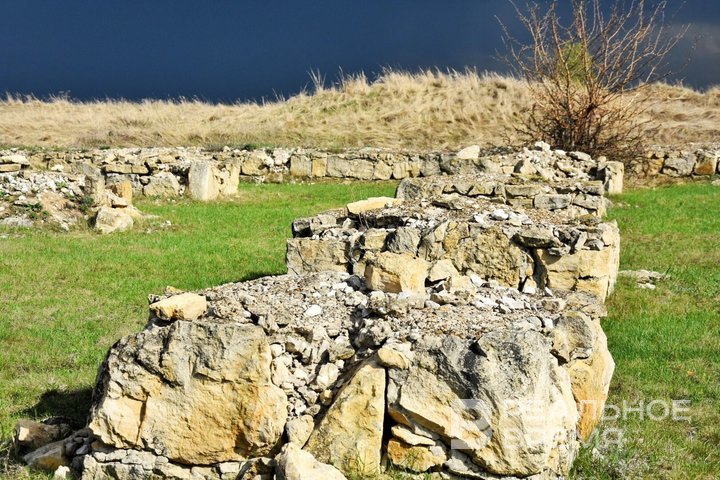
The Ministry of Culture of the Republic of Tatarstan has presented the new tourist route “In the Footsteps of Caravans”. Its task is to show the cultural and historical heritage of Chistopol, Bilyar, and Bolgar. The two-day weekend tour is scheduled to launch in May. During this time, you will not only have the opportunity to see three cities, listen to their history and visit museums, but also plunge into the traditions of the Volga Bulgars.
Ministry of Tourism's mistake
Today Kazan is a centre of industry, education, Tatar and Russian cultures. But this was not always the case. Since its formation around the 10th century and until the 15th, the city's territory occupied only the north part of the Kazan Kremlin. At that time, the cradle of Tatar civilisation was located in Volga Bulgaria, where the main trade hubs, markets, bazaars were located and various crafts flourished.
The concept of the In the Footsteps of Caravans tourist route should just show the inhabitants of the republic how the Bulgarian state developed, how it lived and what made this region one of the richest in the territory of the modern part of European Russia during the period of Volga Bulgaria, the Golden Horde, the Kazan Khanate and at the time of joining Ruthenia.

Volga Bulgaria was a trading and handicraft state, where metalworking, leather, and jewelry technologies developed. Many goods were exported. Besides, the Bulgars controlled transit and trade routes across Eurasia. Through the Great Volga Trade Route, commercial relations with Europe were established, and through the Kama — with the Urals, Siberia and further east, where they intersected with the Great Silk Road.
At that time, Bilyar was the capital of Volga Bulgaria, and after being incorporated into the Golden Horde, the city of Bulgarians became the political and commercial centre of the Ulus of Jochi. The ancient city of Juketau (or Zhukotin, according to ancient Russian chronicles) near Chistopol remained a port city under any government. Nevertheless, all three cities lost political and economic power today and turned into archaeological sites.
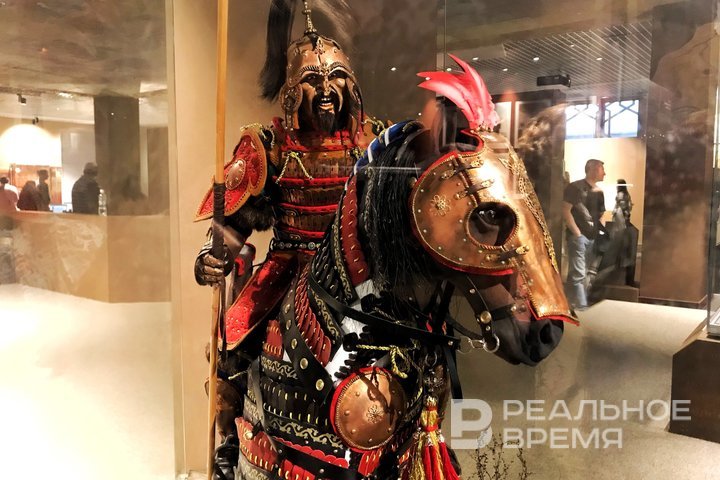
In the Footsteps of Caravans covers these three cities — Chistopol, Bilyar, and Bolgar. The compilers of the route call them underestimated from a tourist point of view.
“Tourism is a business. We want to show that cultural heritage is not worse monetised. Almost 4 million people visit the Kazan Kremlin a year, but at the same time, there are only 450 thousand people who enter the museums. I think this is a mistake from a tourist point of view. But in general, there are about 10 million museum visits in the republic. We have analysed the structure of these visits and, unfortunately, these are event visits. That is, it is an event thing. This is necessary, but, in our opinion, it is important that people come not only to participate in the reconstruction of battles or to eat Sviyazhsk fish soup, but also to see the heritage that is kept in museums. Therefore, our mission is to popularise museums," said Minister of Culture of Tatarstan Irada Ayupova.
The secret of Bulgarian wealth
Volga Bulgaria, despite difficult political relations, traded with Ruthenia. First of all, grain or bread was sent to Ruthenia. The second important export item is locally produced leather goods. Tanners made and sold shoes, jackets and other leather items. Leather boots were considered a sign of prestigious consumption and a prosperous life.
Therefore, the guides say, when the Russian Prince Vladimir saw that the Bulgarian population was walking in leather boots, he realised that these people would not obey easily. As a result, a peace treaty was concluded with Volga Bulgaria and trade relations were established.
In turn, furs, honey, wax, ice, bronze mirrors and a lot of amber were supplied from Ruthenia. Some of these goods were resold further East. Besides, goods from Byzantine Empire came here.
Also, Volga Bulgaria was also a transit point for the distribution of Arab silver coins — dirhems in Ruthenia and Northern Europe. At that time, it was an international currency, much like the dollar is now.

There was another trade route in the upper Kama River, which was the main source of wealth. Precious furs became an analogue of modern oil. They were bought not only to demonstrate a luxurious lifestyle, but also to keep warm on a cold night in the deserts of the Middle East. Bulgars earned more than well from the sale and resale of furs, because the difference between buying fur in the north and selling it in the east was huge.
For example, in the north, one sable skin could be purchased for one dirhem. And somewhere in Calcutta, it was sold at a price of 400 dinars. The dinar is a gold coin, the exchange rate of which was then 10 dirhems. By the way, ermine skin could be sold in the east for even more expensive, for 1 thousand dinars. That's the secret of Bulgarian wealth.
In Juketau, it's better to look at your feet
On the way from Kazan to Juketau, the guide told in some detail about the history of the development and extinction of the main cities of Volga Bulgaria, as well as how the population migrated to Kazan. Then the baton was picked up by local historians, who told and showed Juketau. Showing is much more important here than telling. The thing is that if you arrive at this point unaccompanied, then you may not find the ancient settlement. More precisely, not notice. Juketau is located under a layer of earth. Outwardly, it's just a hilly field. Only when accompanied by a guide with his stories can you imagine what it looked like several centuries ago.
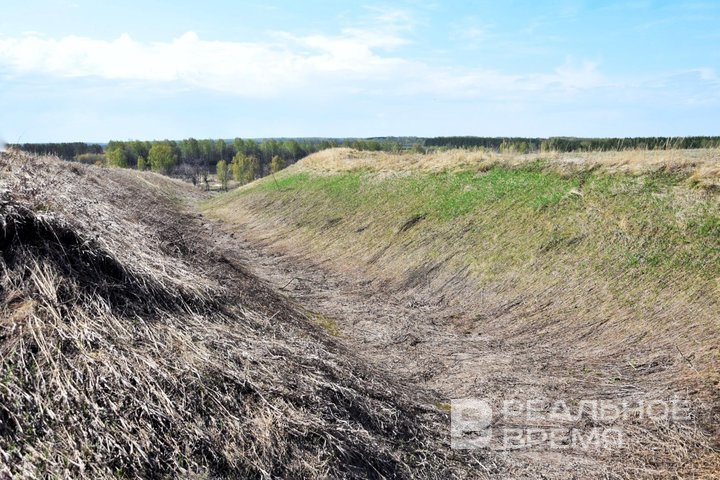
The city was divided into two parts — fortified citadel fortresses with three high ramparts and two moats and an undefended suburb, where residents were engaged in agriculture, fishing, blacksmithing and other crafts. In the 10th century, the city occupied an area of about 7 hectares, and during the Golden Horde period it grew to 150 hectares. For example, the area of Paris at that time was about 450 hectares, and in the ancient Russian cities of Kyiv, Vladimir and Veliky Novgorod — from 100 to 300 hectares.
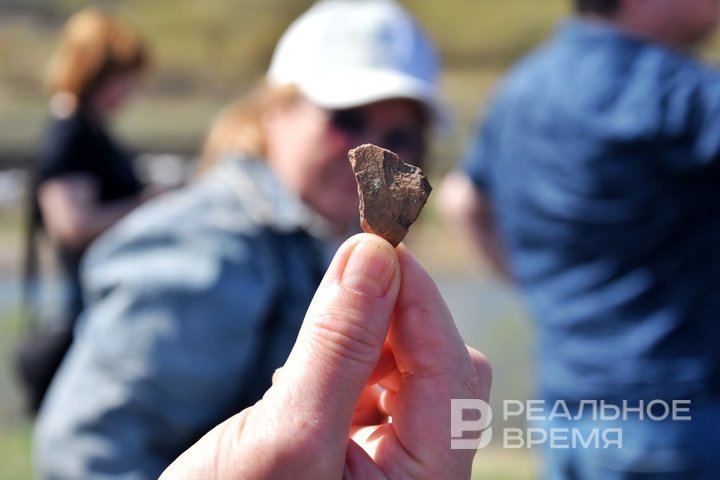
But despite that the city is hidden from view, there is still archaeological wealth lying almost underfoot. Svetlana Skuchaeva, the director of the Chistopol Historical, Archaeological and Literary Reserve, said that on the way to the cottage, which is located next to the settlement, she accidentally stumbled upon an ancient tombstone with epitaphs. And during our walk, she found a clay fragment of dishes under her feet. Therefore, in Juketau, it is worth looking not only at the natural beauty and imagining in your head what the city looked like a thousand years ago, but also paying attention to what lies right on the ground.
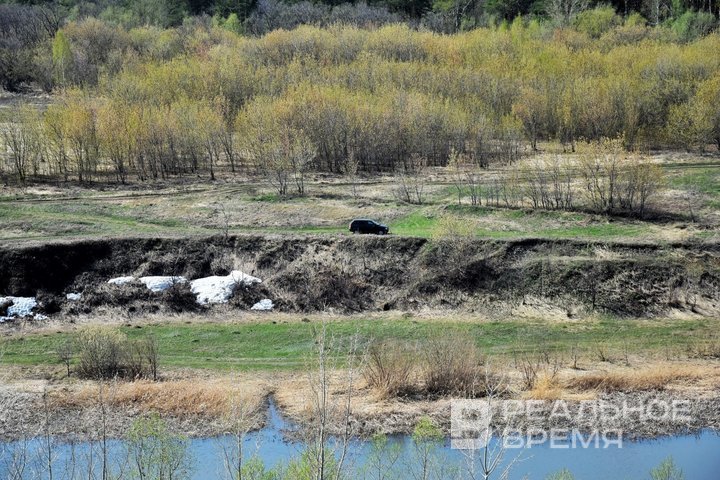
Since Juketau is located next to Chistopol, the route includes a sightseeing tour of the city, a visit to the Museum of the city's history and the Museum souvenir salon with traditional Chistopol tea party.
Bilyar: from alchemy to chemistry
The next point on the route is the Bilyar settlement. This is a huge area where the foundations of a mosque, baths, feudal lord's house, and a pottery quarter are preserved. The most impressive and monumental part is, of course, the mosque. At one time it was one of the largest buildings in Eastern Europe, and now it is considered the oldest mosque in northeastern Europe. During its heyday, prayer halls reached an area of 2.5 thousand hectares, and the building consisted of two parts — wooden and stone.
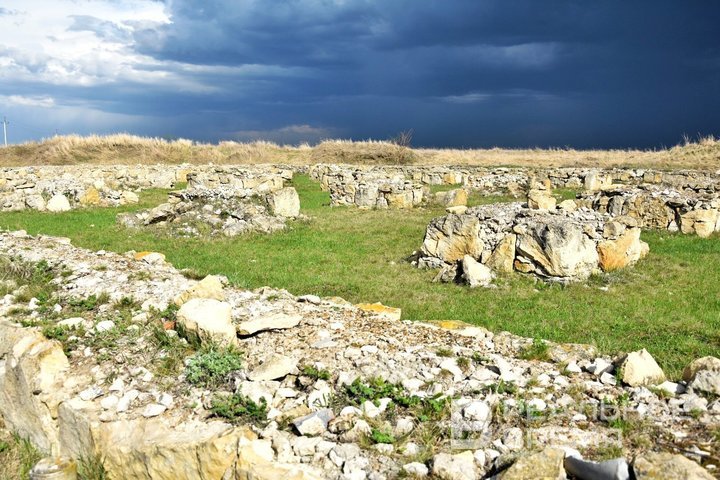
Another significant building here is the so-called feudal lord's house. It is also a complex building for its time. The foundation of the house goes into the ground for more than a metre. Inside, there were four rooms of about 16 square metres. There were arches, a porch, interior decor, as well as a chimney and a heating system with a length of about 300 metres. In general, a luxurious mansion. The house was built around the 10th century, but already in 1236 it was destroyed. Under the rubble of the walls, archaeologists found the remains of women, children and the elderly. It is assumed that they were hiding from the Mongol-Tatar army, and the men were outside, defending their home.
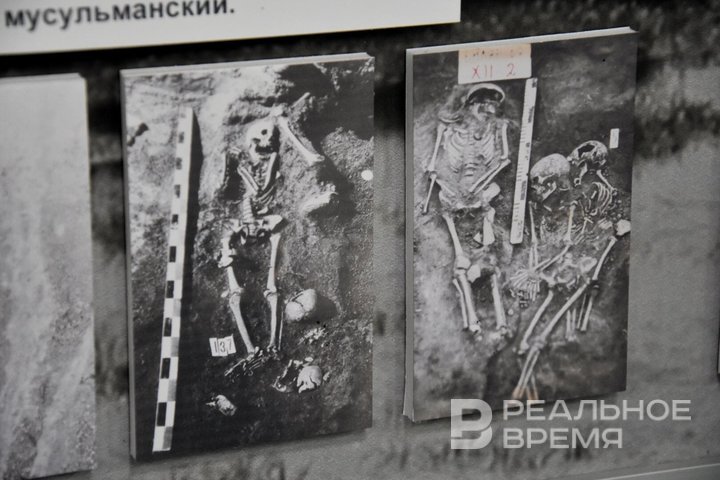
Alchemical workshops were also found here, along with all the attributes of alchemists. Now the organisers of the route within this tour are developing a separate programme that will be based on the activities of the Bilyar alchemists. It is assumed that this part will be the main one in the walk through the ancient Bilyar.
The only disadvantage of this place is the lack of information. If you come here, as in Juketau, independently, you will have to google, and not study history on the spot. The director of the Bilyar Museum-Reserve, Zufar Shakirov, said that there used to be information signs here, but local youth break them. Therefore, they decided not to install the plates yet. Now Shakirov, together with the leadership of the Ministry of Culture, are trying to find an adequate vandal-proof replacement.
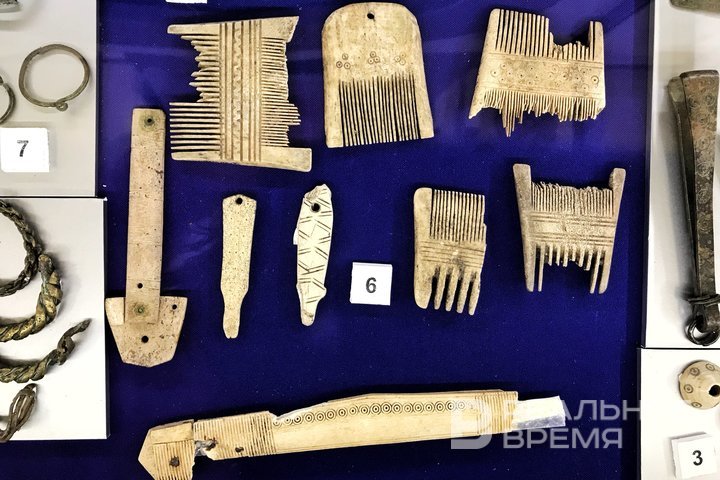
After the Bilyar settlement, the next point on the route is the Bilyar Historical and Archaeological Museum and Nature Reserve. If the settlement shows the scale and gives a three-dimensional view of the ancient city, then in the museum you can already see the details of the life of the inhabitants of Bilyar. There is also a huge amount of dishes, jewelry, and tools. On the walls and on the floor, there are maps of Volga Bulgaria and Bilyar from different times.
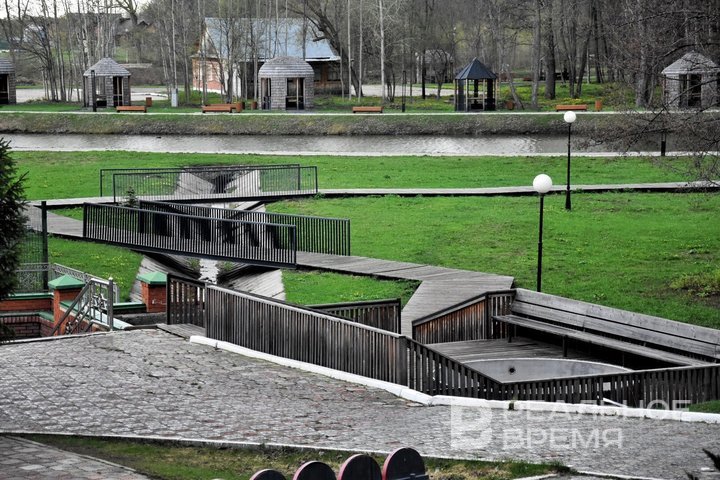
After the museum, a break is planned in the route for “communication with nature” in the Bilyar Nature Reserve. This is a luxurious pine forest with partial landscaping. Everything basic for recreation — passages, stairs, gazebos — is there. Some elements are outdated and do not look modern. According to Minister of Culture of the Republic of Tatarstan Irada Ayupova, the complex is going to be renovated in the near future. Shakirov said that the engineering water supply system, through which water flows from the spring, will be replaced, as well as the territory will be landscaped.
Bolgar — expensive and rich
After the Mongol-Tatar yoke burned Bilyar, the capital of the Ulus of Jochi was moved to Bolgar. Under the Golden Horde, the city reached its maximum development. All that wealth has already been embodied in a modern form in the reconstruction in the Bulgarian Museum-Reserve. There are many preserved and restored buildings here. Modern landscaping has been done on the territory of the complex. In general, everything really looks expensive and rich.
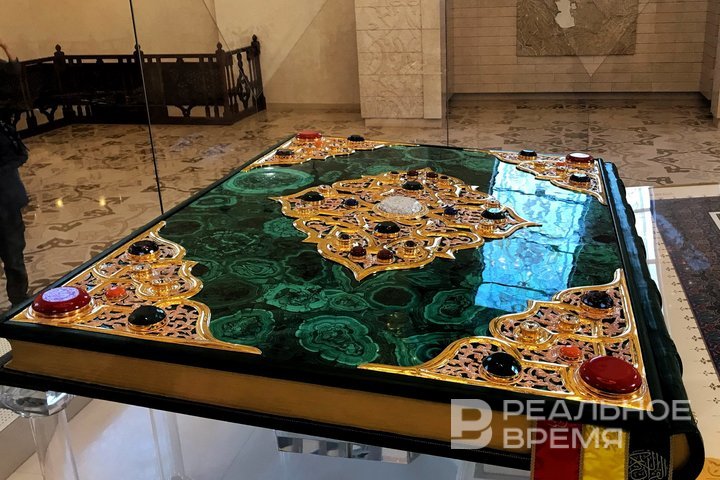
The itinerary includes a visit to the Museum of Bulgarian Civilisation, where more than 1,600 exhibits are located on two thousand square metres. This is a museum of a modern type, which is equally interesting for both adults and children. Besides it, the local guide showed the Museum of the Koran. All possible versions of the Koran, including electronic versions, as well as the attributes necessary for prayer are presented here. But the main exhibit of the museum is a huge Koran, which was included in the Guinness Book of Records.
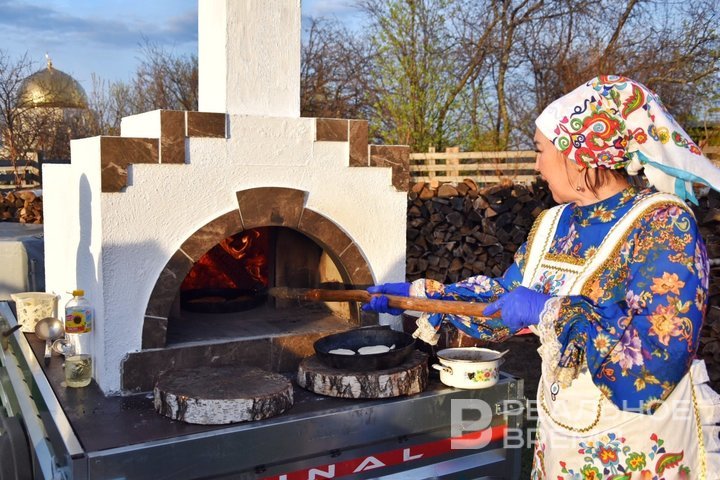
At each point of the In the Footsteps of Caravans route, there is an information part and an emotional one. A stunning forest evoked emotions in Bilyar, and a tea party in Chistopol. In Bolgar, they also decided to give the guests tea, but with a different one. And of course, the Bulgarian traditional tea party is a bright end to the route. Tea is brewed here on a campfire in a cauldron along with herbs that grow near the reserve. Tea is served along with traditional pancakes, which are baked in a wood-burning oven outside. It is difficult to decide what you get more pleasure from — from tea with pancakes or from how all this is cooked on a campfire and in the oven in front of your eyes and served on the table hot from the oven.
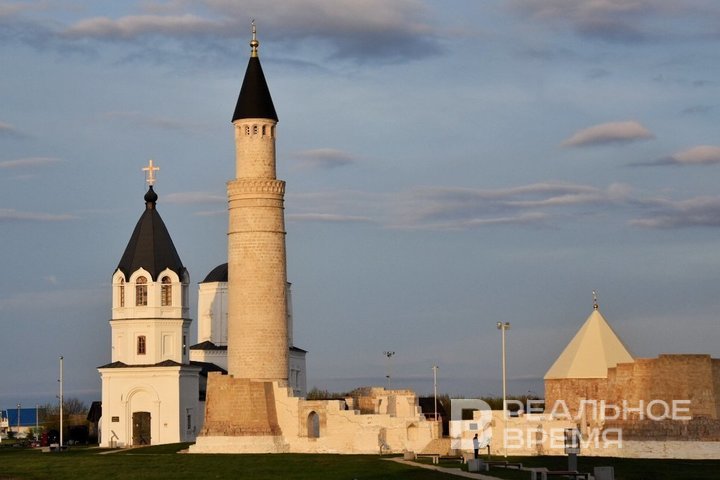
In the Footsteps of Caravans route is to be launched in May. The Ministry of Culture of the Republic of Tatarstan wants to finalise it together with bloggers and journalists so that this weekend tour meets the needs of modern residents of the republic as much as possible. Not everything will be in time for May. For example, they will not have time to improve the nature reserve in Bilyar. And the renovation of museums in Chistopol will not begin until next year. But in general, the route is interesting if it can be conveniently and clearly realised.